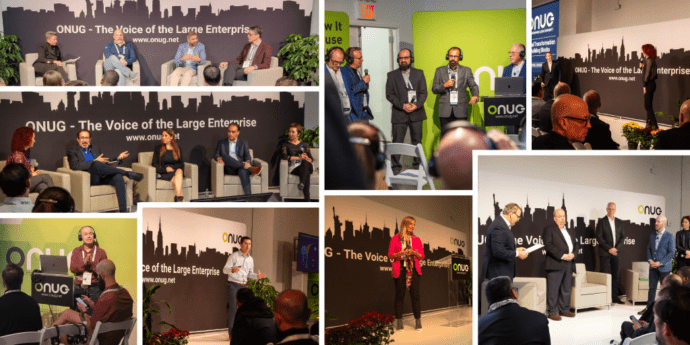
Agentic AI: A Bold New Era for Enterprise Operations
Agentic AI—intelligent systems capable of proactive, context-aware decision-making—is reshaping how corporations operate. Rather than forcing organizations to rely on rigid, feature-laden enterprise software that only fulfills a fraction of their needs, Agentic AI learns a company’s unique business logic to generate predictive, customizable workflows in real time. This shift not only enables “digital twin” simulations of corporate operations—letting leaders test new ideas or products in a virtual environment before rolling them out—but also demands a radical rethinking of enterprise compute infrastructures. To fully harness Agentic AI, businesses require redesigned data centers, robust security frameworks, high-performance networks, and scalable GPU clusters, all unified by an architecture that balances flexibility, resilience, and compliance.
A core driver behind this transformation is the need for Zero Trust strategies and Secure Access Service Edge (SASE) solutions. As AI grows more autonomous, it ingests and acts upon increasingly sensitive data. CISOs must therefore pivot from traditional perimeter-based defenses to a model assuming every user, device, and application could be compromised. Combined with AI-driven Network as a Service (NaaS), which can instantly provision and optimize bandwidth for large-scale AI workloads, Zero Trust and SASE ensure that corporate networks remain both secure and agile. Leaders see these elements as key to bridging the gap between AI hype and genuine results. Those who demonstrate real, tangible value stand to gain significant market advantage, while those who fail to evolve risk losing credibility in a world moving quickly toward AI-first operations.
Yet, the infrastructure challenge extends beyond security. GPU clusters, designed for massive parallel processing, are essential for both training and inference of large language models (LLMs) and other AI workloads. These clusters often require specialized cooling, power, and connectivity to handle thousands of simultaneous calculations with minimal latency. Many data centers will have to incorporate everything from high-bandwidth networking fabrics to advanced storage solutions capable of feeding data to GPUs in real time. This level of redesign hints at a future in which the enterprise data center looks more like a high-performance computing facility than a traditional IT warehouse.
The broader enterprise software market, meanwhile, faces a fundamental disruption. Traditional Software as a Service (SaaS) vendors often deliver expansive platforms meant to satisfy a wide range of customers. However, Agentic AI flips this model by offering customizable, predictive solutions that tailor themselves to each company’s needs. For corporations, this could mean drastically reduced software bloat, since they would no longer have to conform to a one-size-fits-all product. Instead, AI agents adapt to the organization, fueling speculation that many of today’s top SaaS providers will need to pivot—or risk irrelevance—as enterprises demand more adaptive and efficient solutions.
Major players already sense this shift. OpenAI has expanded beyond APIs, exploring enterprise licensing and deeper partnerships. Microsoft is integrating AI into Azure and Microsoft 365, aiming to create an ecosystem where predictive workflows are the norm. IBM continues to enhance Watson offerings with hybrid-cloud approaches, while Cisco and HPE are embedding AI-driven technologies into network infrastructure. Even chip manufacturers like AMD are investing heavily in data center and GPU advancements to stay competitive in an AI-powered world. For each of these companies, the Agentic AI revolution is not just a market opportunity; it’s a moment that could redefine their core business models.
At the AI Networking Summit, these shifts take center stage. Bringing together senior IT executives who manage large AI workloads, as well as solution providers shaping the future of enterprise AI, the Summit addresses both the technical and cultural barriers to adopting Agentic AI. From best practices in hybrid-cloud deployments—where local GPU resources can be combined with the elasticity of public clouds—to strategies for AI governance, every facet of enterprise transformation is on the table. Collaboration becomes vital, as no single stakeholder can solve the operational, security, and ethical challenges involved in reworking business operations around AI.
Community-building and knowledge exchange are crucial in this phase. As Agentic AI evolves from concept to reality, its success hinges on open dialogue among corporate executives, solution vendors, and researchers. Such collaboration will determine everything from how we define appropriate risk controls to how we design networks that can deliver the low-latency performance critical for real-time AI decision-making. If the last decade of digital transformation taught us the importance of the cloud, the next five years promise a shift of even greater magnitude, as companies strive to harness AI agents that can autonomously handle tasks once bound by human oversight.
In the end, Agentic AI offers a path to fundamentally rewire corporate operations. Whether it’s using digital twins to experiment with new products, automating complex workflows, or enabling executives to base decisions on predictive insights rather than static reports, the potential is enormous. Yet, this potential comes with an obligation to transform the foundational layers of the enterprise. A new generation of data centers, security protocols, and network architectures must emerge—laying the groundwork for AI systems flexible enough to handle constantly evolving demands. By investing now in robust infrastructure, companies prepare for a future in which AI isn’t a mere add-on but the organizational engine driving innovation, efficiency, and competitive advantage.
Join us at the AI Networking Summit in Dallas where we’ll delve into the infrastructure strategies, governance considerations, and AI-driven paradigms shaping the next era of enterprise transformation. It’s not just about adopting the latest technology—it’s about orchestrating a new kind of corporate future.


